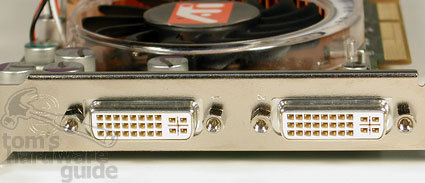OpenGL: ATi FireGL X2-256t and NVIDIA Quadro FX 1100
Test Candidates In Detail
ATi FireGL X2-256t: Better Cooling Against Deficiencies?
From a purely visual aspect, the radical new-look cooling concept of the FireGL X2-256t stands out. Large copper plates with numerous fins replace the simple aluminum heat sinks of the predecessor X2-256 (without "t"). What could be the reason for this? Technology-wise, there's little to report, bar one slight difference: the suffix "t" in the product name, which denotes higher clock rates. Accordingly, the chip clock speed has been increased from 380 MHz to 412 MHz. In addition, the memory clock rate now runs at 365 MHz, compared to 350 MHz. So much for the innovations.
ATi's FireGL X2-256t is based on the Radeon/FGL9800 (Codename R350W). THG previously detailed the AGP8X processor in Radeon 9800 256 MB . The VPU incorporates around 107 million transistors. The card was equipped with a 256 MB DDR-II memory module. The interface features a bus width of 256 bit. With a memory clock rate of 365 MHz, this yields a theoretical bandwidth of 23.4 GB/s.
The key functions of the chip include:
- 4 parallel geometry engines;
- 8 parallel pixel pipelines;
- Floating point precision of 128 bit;
- Two integrated RAMDACs with 400 MHz and 10 bit per channel;
- Max. 8 light sources (HW accelerated);
- 16 textures per pass;
- Frame buffer support with 10 bit per channel;
- 2X/4X/6X full scene anti-aliasing modes.
Due to its space-saving design, the card only takes up one slot on the motherboard. By way of comparison, expensive OpenGL products take up more than one slot. The X2-256t is equipped with two DVI-I ports, which allow for the connection of digital flat-panel displays or analog monitors when using an adaptor that is supplied. The maximum resolution is 2048x1536 pixels per display.
Nice feature: There are air duct inlet and outlet openings on the heat sink
The FireGL X2-256t requires an additional power supply.
Get Tom's Hardware's best news and in-depth reviews, straight to your inbox.



